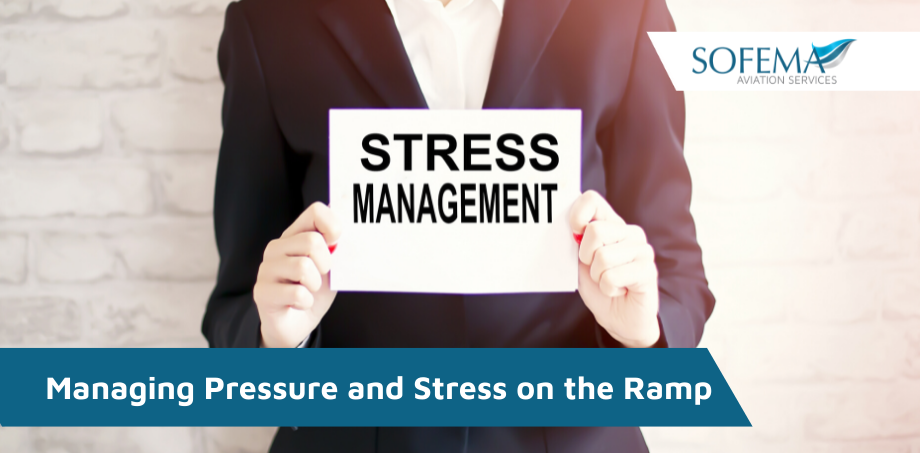Sofema Aviation Services (SAS) www.sassofia.com considers issues related to Pressure and Stress within the Aircraft Ramp Environment.
Introduction – Pressure Can Cause Stress
Note the comment “Can” because it is not guaranteed it depends very much on the individual coping mechanisms. In fact, the degree of stress experienced depends on the functioning of two protective physiological mechanisms:
When confronted with a threat to our safety, our first response is physiological arousal which leads to fight or flight response – typically this is expressed in other ways, for example, emotional and physical energy leading to assertive communication.
A second adaptive mechanism means that we deliver diminishing returns – which means we deliver less (note this is not necessarily possible when an aircraft is departing in 20 mins. time!
Stress is experienced when either of these mechanisms are not able to function correctly.
The process of appraisal, behaviour, and stress is continuous, and managing stress can result from changing the way the situation is appraised (cognitive techniques) or responded to (behavioural or cognitive techniques).
Considering Management & Peer Pressure?
Management & Peer pressure is the pressure we feel to do what our Management or group or peers expect of us. Such pressure is closely linked to organizational norms and culture.
The term “management and peer pressure” is not used in this instance to describe socially desirable behaviours, but rather a degree of pressure to conform.
An individual may feel that there is pressure (In fact this can be real or perceived/ imagined) to take a shortcut in order to complete the task or for an aircraft to depart by a certain time.
Note – Whilst there may not actually be a specific pressure from management to take a shortcut, there can still be significant but nevertheless subtle pressure from peers.
Such “subtle pressure” may in fact encourage you to deviate from the normal “required” behaviour and for sure would constitute Management & peer pressure.
If we allow our own opinions, attitudes, actions or to be negatively impacted of even affected by our peer group’s prevailing opinions, attitudes, actions and perceptions
Pressure Drivers
The extent of the “perceived” pressure, depends on a number of factors:
- Culture consider the different willingness to conform or challenge
- Gender (men tend to conform less than women)
- Self-esteem (a person with low self esteem is likely to succumb to peer pressure with a lower level of challenge
- Familiarity of the subject matter (a person is more likely to succumb to the majority view if they know less about the subject matter
- The expertise of the group members (if the individual respects the group or perceives them to be very knowledgeable he or she will be more likely to conform to their views)
Meeting the Challenge
- Personal characteristics such as coping skills (for example, problem solving, assertiveness, time management)
- The working environment and social support.
- Improved work infrastructure,
- Training,
- Good management and employment practices,
- Work Organisation.
Employer Response
- Blame the victim?
- Employer has a duty of care.
- Beneficial to manage Stress Levels.
- Reduced Pressure = Reduced Accidents do you agree?
Next Steps
Follow this link to our Library to find & Download related documents for Free.
Sofema Aviation Service provides Classroom & Webinar Training covering Ramp Safety & Ramp Human Factors Training including a 2-day Aircraft Ramp Safety and Ramp Human Factors Initial Training.
For additional details, please see our websites www.sassofia.com and www.sofemaonline.com or email team@sassofia.com
Tags:
Aircraft, Aircraft Ramp, aviation, aviation safety, Human Factor Training, Human Factors, Pressure, Safety, Safety Management, Stress, Stress Management




